Florida boasts over six million acres of public land available for hunting, making it an excellent destination for anyone hoping to bag a turkey or wild hog. Florida Wildlife Management Areas (WMA) are located throughout the state, offering a variety of habitats for hunting, frogging, and fishing. Keep reading to learn about the top 14 public hunting lands in Florida.
To hunt on WMA land, the Florida Fish and Wildlife Conservation Commission requires that hunters carry a hunting license as well as a management area permit. Be sure to check out the specific Wildlife Management Area brochure for the area you’re planning on visiting.
1. Southern Glades WMA
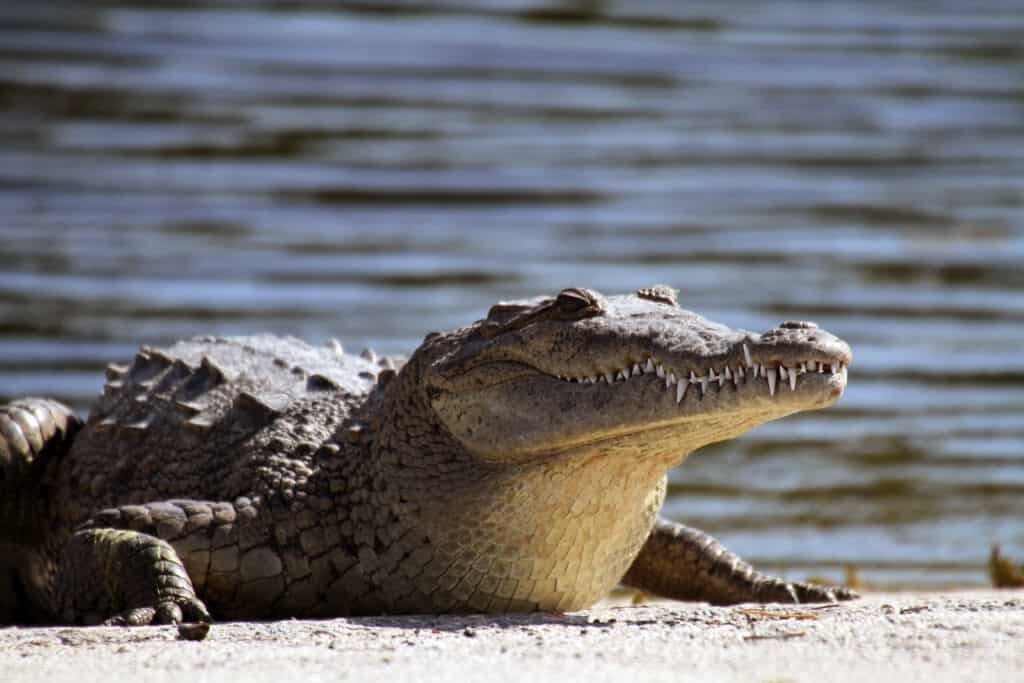
American crocodiles can be found in the Florida Everglades.
©iStock.com/GriffinGillespie
Spanning over 30,000 acres in Miami-Dade County, Southern Glades WMA is adjacent to the Everglades National Park. The Everglades region is a subtropical wetland with a warm, wet climate and abundant wildlife. The area is home to the American crocodile and over 20 species of snakes.
Hunting in this area includes deer, rabbits, grey squirrels, and quail. There are no bag limits for armadillos, raccoons, skunks, and beavers. Southern Glades WMA is open year-round for fishing, and frogging is available from late November through the first of March.
The hunting season opens in July for archery, then in September for muzzle-loading guns. The general guns season runs from mid-September through late November.
2. Escambia River WMA

Bobcat season at Escambia River WMA starts in January.
©Geoffrey Kuchera/Shutterstock.com
The Escambia River WMA, located about 20 miles north of Pensacola, is dedicated to protecting the natural resources of the river and the surrounding area. This wildlife area encompasses over 35,000 acres in Escambia and Santa Rosa Counties. It features several boat launches and a half dozen campgrounds.
In January, the seasons for bobcat, raccoon, opossum, and fox hunting open. Fishing and frogging are permitted year-round. The season for muzzleloading guns and archery runs for a short period in February, followed by turkey season from mid-March through late April.
Hunting for small game, including wild hogs, rabbits, coyotes, and nutria opens in early November, followed by the opening of general gun season in late November. The Escambia River WMA also features several dates throughout the year for families with children between the ages of 8-16 to hunt.
3. Yellow River WMA
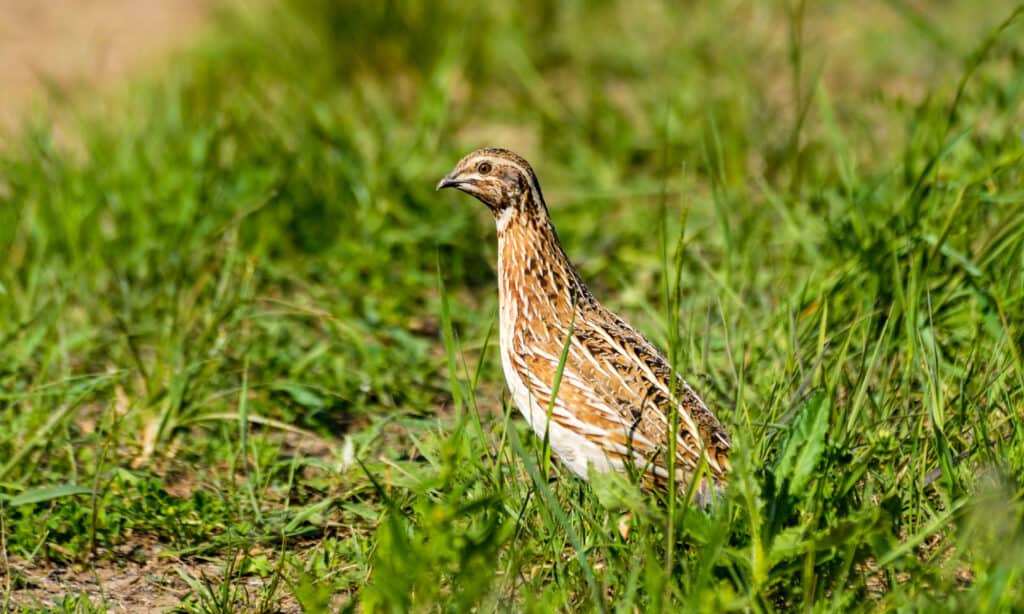
Hunters at Yellow River WMA have a daily quail limit of 12.
©iStock.com/VictorTyakht
Situated in northwest Florida in Santa Rosa and Okaloosa Counties, the Yellow River WMA stretches out for over 27,000 acres along the river’s banks. There are several boat launches offering access to the Yellow River. The Northwest Florida Water Management District allows camping in areas they manage, even though there are no established campgrounds.
The seasons for archery and muzzleloading guns run in February, followed by the spring turkey season in March and April. Wild hog hunting is open in May and June. The season for small game, including armadillo, rabbit, quail, and in-season birds, runs from November through March. The general gun season, which includes deer, starts with dates in late November and afterward runs from December through January. It is legal to trap animals, including bobcats and otters, from December through February.
4. Green Swamp WMA

Armadillos have distinctive armored shells made of overlapping scales.
©http://www.birdphotos.com, CC BY 3.0, via Wikimedia Commons – License
Located about midway between Orlando and Tampa, the Green Swamp WMA encompasses over 50,000 acres in Sumter, Polk, and Lake Counties. The area has two primitive campgrounds with sites available on a first-come, first-served basis.
Fishing and frogging are available all year. The small-game season starts in early February and ends in early March. During this time, hunting armadillos, squirrels, coyotes, and more is legal. Spring turkey season runs from mid-March through mid-April. It is legal to use dogs to hunt for wild hogs from late September through early October, and then archery season kicks off in late October for deer, turkeys, and hogs.
General gun season lasts from early December through late January. Trapping is prohibited in Green Swamp WMA. There are no bag limits for wild hogs, raccoons, armadillos, coyotes, or skunks.
5. Ocala WMA

The Ocala WMA is located just south of the Ocala National Forest.
©Catherine Cornish/Shutterstock.com
Stretching almost 400,000 acres, the Ocala WMA is bordered by Lake George to the east, the Rodman Reservoir to the north, and the Ocala National Forest to the south. Bears inhabit this area, and campers must store food in bear-resistant containers suspended 10 feet off the ground.
Ocala WMA is open to fishing and frogging all year, and spring turkey seasons opens from mid-March to mid-April. After that, the archery season runs from late September through late October, followed by muzzleloading gun season in October in the Church Lake, Hopkins Prairie, and Lake Delancy units.
The season for foxes, raccoons, opossums, and bobcats runs from November through early April. The general gun season runs from November through early December, and hunters are allowed to use dogs with some restrictions. Trapping is permitted from December through February.
6. Tate’s Hell WMA
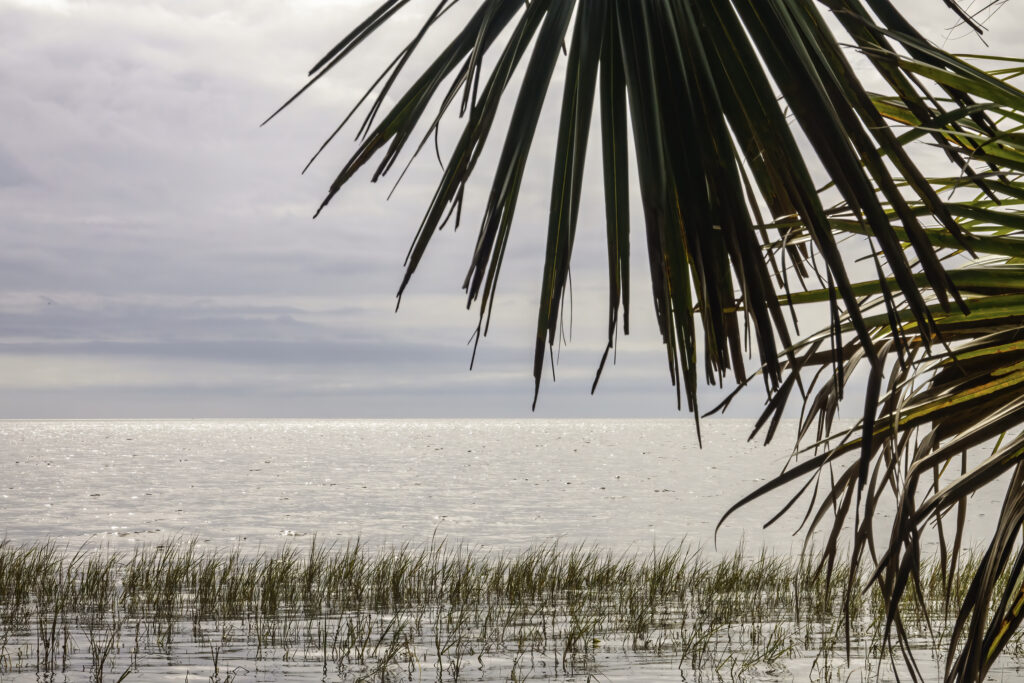
The Apalachee Bay borders Tate’s Hell WMA to the south.
©iStock.com/kschulze
This is a great hunting spot for camping because the area includes over two dozen campsites. Tate’s Hell WMA sits along the Apalachee Bay and stretches for over 180,000 acres in Liberty and Franklin Counties.
Hunters can set traps in Ocala WMA throughout February for opossums, raccoons, beaver, otters, and coyotes. Archery and muzzleloading gun hunting is open in early February. After that, spring turkey season opens in March with a special time for youth turkey hunting.
Small game season runs from early November through early March, and it is legal to hunt wild hogs, in-season birds, squirrels, armadillos, and more. This season overlaps with the general gun season, when it is legal to hunt deer. During this time, using dogs to hunt with certain restrictions is also permissible.
7. Perdido River WMA
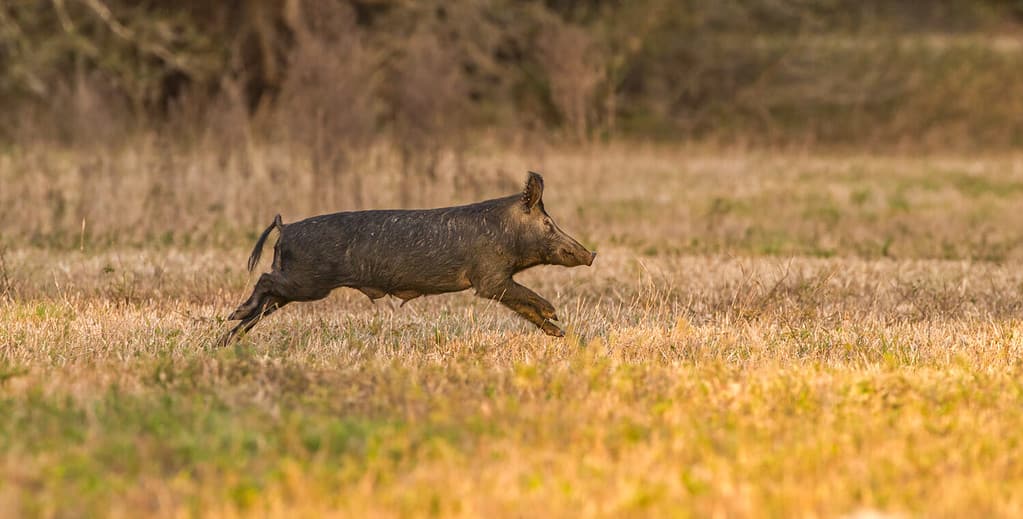
There are no bag limits for wild hogs at Perdido River WMA.
©Chase D’animulls/Shutterstock.com
Located on the western edge of the Florida panhandle, the Perdido River WMA spans over 6,000 acres along the Florida-Alabama state line. There is one established campground and several places to launch boats or canoes for year-round frogging and fishing.
Perdido River WMA prohibits trapping. General gun season is open for select dates in January for deer, waterfowl, wild hogs, and small animals such as quail, rabbits, and skunks. The archery and muzzleloading gun season is in February, followed by the spring turkey season in March.
The season for archery runs from mid-October through mid-November. Small game season runs from late November through early March and overlaps with dates for family hunting in November and January.
8. Big Cypress WMA

At Big Cypress National Preserve, you can see trees native to Florida.
©VIKVAD/Shutterstock.com
The Big Cypress WMA is located within the Big Cypress National Preserve, which is home to black bears, panthers, and multiple species of birds. This area’s unique swampy ecosystem is also home to Deep Lake, which, as the name suggests, is the state’s deepest lake.
Hunting at Big Cypress WMA has some additional limits due to the requirements of the national preserve. Frogging is limited to one five-gallon bucket per day, and freshwater fishing must be with a hook and line. However, hunters can bag non-native reptiles like green iguanas year-round.
Small game season runs from early January through early February, and hunters can use dogs to hunt for gray squirrels, in-season birds, and rabbits. Spring turkey season opens in February with youth hunting. Archery season takes place in September, and the muzzleloading gun season is open in October, with the exception of Deep Lake Unit. The general gun season is open from early November through December. Big Cypress WMA prohibits the hunting of bobcats and otters.
9. Chassahowitska WMA
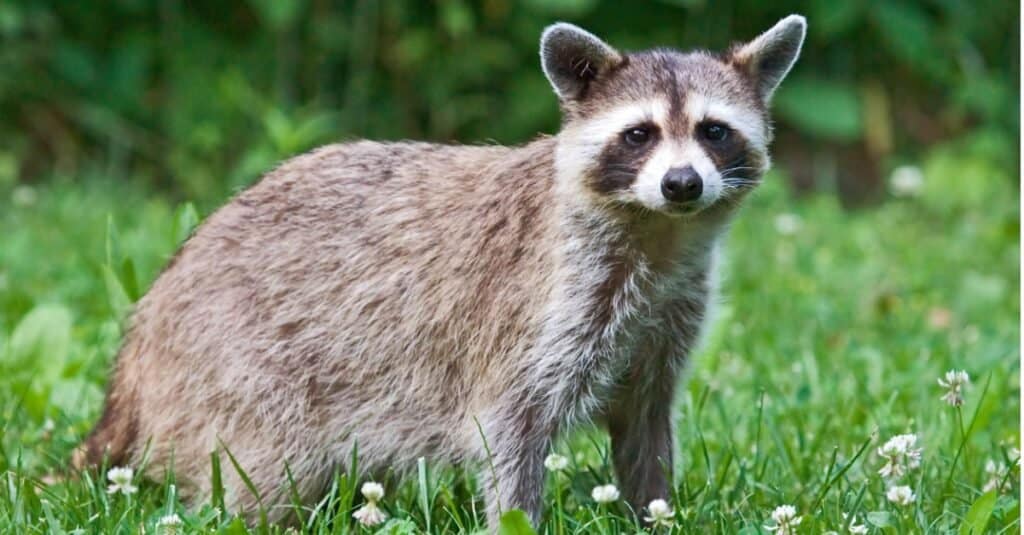
The raccoon season at Chassahowitzka WMA is open in February and May with no bag limits.
©iStock.com/JZHunt
Located in Hernando County near the Chassahowitska Bay, the Chassahowitska WMA spans almost 35,000 acres. It is adjacent to a national wildlife refuge. You cannot camp at this public hunting spot, but there are multiple parking areas with access to different parts of the wildlife area.
Trapping is prohibited at Chassahowitska WMA, although fishing and frogging are permissible year-round. The season to hunt wild hogs is in January, and hunters may use dogs during the season with some restrictions. Raccoon season runs through February and May, and there are no limits on the number of raccoons that you can hunt.
Spring turkey season opens in March, with some additional dates in April. Archery season runs from mid-September through mid-October, followed by a muzzleloading gun season at the end of October. General gun season is open from early November through the end of December for animals, including deer, wild hogs, opossums, coyotes, and nutria.
10. Osceola WMA
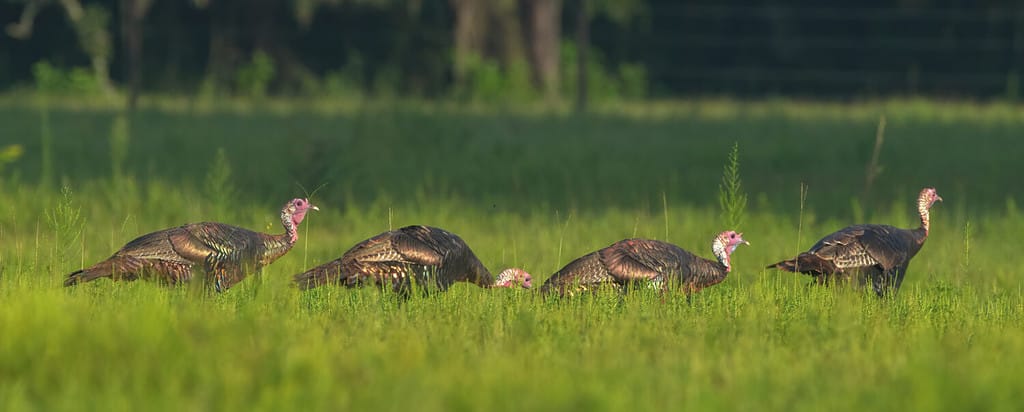
Many of Florida’s public hunting lands, including Osceola WMA, offer dates for young people to hunt turkeys in the spring.
©Chase D’animulls/Shutterstock.com
Located in northern Florida to the west of Jacksonville, Osceola WMA encompasses almost 300,000 acres in Columbia and Baker Counties. There are over a half dozen designated campsites, as well as a shooting range. Additionally, Osceola WMA offers access to the Florida Trail, the state’s longest hiking trail.
The Osceola WMA includes the Big Gum Swamp wilderness within its designated dog hunting area. Trapping is permitted here from early January through February for animals, including raccoons, opossums, armadillos, coyotes, bobcats, and otters. The small game season opens in early January and closes in early March.
Spring turkey season runs from mid-March through mid-April. Archery season runs from late September through mid-October, followed by the season for muzzleloading guns. The general gun season lasts from early November through early January for deer, wild hogs, and smaller animals.
Some deer may have yellow tags as part of a study of white-tailed deer. Hunting these deer is legal if it meets all other requirements. Hunters must call the number on the tag straightaway to report their harvest.
11. Blackwater WMA

Fox hunting at Blackwater WMA is open from May through March.
©Sandra Standbridge/Shutterstock.com
Located in the western end of Florida’s panhandle, this public hunting spot stretches out over 200,000 acres in Santa Rosa and Okaloosa Counties. Blackwater WMA has designated areas for fox hunting as well as hunting with dogs, although there are specific regulations for each.
Fishing and frogging are open year-round, although trapping is prohibited at Blackwater WMA. Quail season is open on select dates in February and is limited to the Quail Enhancement Area. The season for archery and muzzleloading guns is open for select dates in January and February.
The spring turkey season runs from mid-March through mid-April. The small-game season starts in early November and closes in early March. This overlaps with family hunting dates in December. Blackwater WMA requests all family hunt participants to attend an orientation at the Munson Fire Station before the event.
12. Fisheating Creek WMA
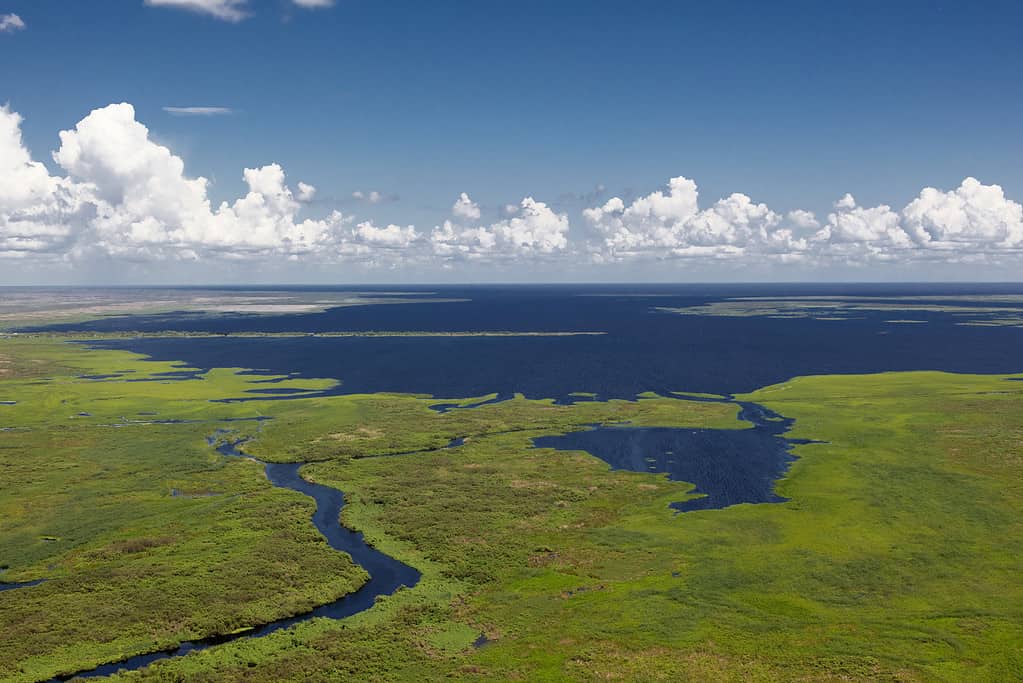
Fisheating Creek flows into Lake Okeechobee, which borders the Fisheating Creek WMA.
©6381380/ via Getty Images
This public hunting spot offers primitive camping year-round. It is located near Lake Okeechobee and spans over 18,000 acres in Glades County. Fisheating Creek WMA prohibits hunting with dogs, although hunters can use leashed dogs to trail wounded game. Additionally, there are no bag limits for wild hogs, armadillos, skunks, opossums, and coyotes.
Spring turkey season kicks off in early March, and archery season opens for select dates in August. Muzzleloading gun season happens in September, followed by the general gun season in late September and October. Small game season runs from early December through mid-February and includes bobcats and otters.
13. Apalachicola WMA

Apalachicola National Forest, which contains the Apalachicola WMA, is Florida’s largest national forest.
©Boomer3195/Shutterstock.com
Located in the Florida panhandle southwest of Tallahassee, Apalachicola WMA is located within the Apalachicola National Forest, which is the state’s largest national forest. This is an excellent hunting spot for camping because the wildlife area offers nearly two dozen campsites within its 580,000 acres.
Apalachicola WMA has designated areas for fox hunting, quail hunting, and hunting with dogs. Additionally, the Florida Trail runs through the center of the wildlife area. Trapping is permitted in this hunting spot from the beginning of February through the beginning of March. However, fishing and frogging are available all year.
Spring turkey season takes place from mid-March through mid-April. The small game season runs from early November through early March, which overlaps with general gun season in November, December, and January. Apalachicola WMA permits the hunting of bobcats and otters from the first of December through the first of March.
14. Choctawhatchee River WMA

The Choctawhatchee River WMA is located along the Choctawhatchee River, which is just over 140 miles long.
©Phillip W. Kirkland/Shutterstock.com
This public hunting spot stretches along the Choctawhatchee River across almost 60,000 acres across four counties. The Choctawhatchee River WMA has around a half dozen campsites and several places to launch boats or canoes. Further, there is a designated area for hunting with dogs.
Choctawhatchee River WMA permits frogging and fishing year-round. Trapping is permitted at different times in the still hunt and dog hunt areas. Spring turkey season runs from mid-March through mid-April, and the season for hunting wild hogs with dogs is open for select dates in May, June, July, August, and September. There are no bag limits for wild hogs.
Archery season runs from mid-October through mid-November. The season for small game opens in early November and runs through March. Hunting for bobcats and otters is permitted from the first of December through the first of March. General gun season is open for a weekend in November and then again from early December through the end of January.
Hunting in Florida: 14 Great Public Hunting Lands Summary
| Rank | Public Hunting Land |
|---|---|
| #1 | Southern Glades WMA |
| #2 | Escambia River WMA |
| #3 | Yellow River WMA |
| #4 | Green Swamp WMA |
| #5 | Ocala WMA |
| #6 | Tate’s Hell WMA |
| #7 | Perdido River WMA |
| #8 | Big Cypress WMA |
| #9 | Chassahowitska WMA |
| #10 | Osceola WMA |
| #11 | Blackwater WMA |
| #12 | Fisheating Creek WMA |
| #13 | Apalachicola WMA |
| #14 | Choctawhatchee River WMA |
The photo featured at the top of this post is © Carolyn Davidson Hicks/Shutterstock.com
Thank you for reading! Have some feedback for us? Contact the AZ Animals editorial team.







